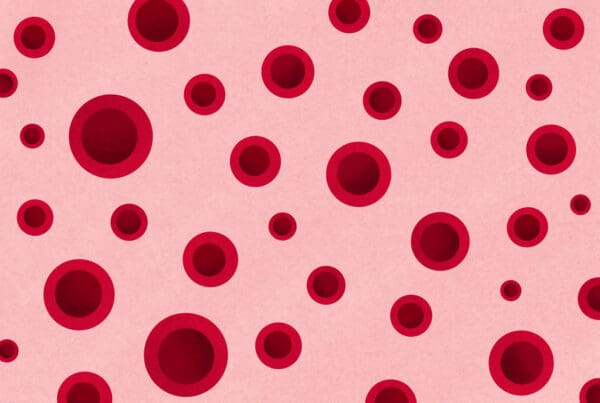Highlights | A liver- (and sometimes life-) saving gift
- Over 10,600 people nationwide are currently waiting for a liver transplant.
- Living donor liver transplant gives patients more control over their transplant and helps them get the procedure faster.
- UW Medicine’s Living Donor Liver Transplant program has helped UW Medicine and Seattle Children’s Hospital perform nearly four times as many living donor liver transplants as the national average.
The liver is the second most commonly transplanted organ in the United States. Most transplanted livers are deceased donor organs, similar to heart, lung and pancreas transplants. But as waiting lists grow, providers are embracing a different source to accelerate these life-saving surgeries. Living donors can make living donor liver transplants a feasible option for more patients.
UW Medicine is a national living donor transplant leader, says Mark Sturdevant, MD, surgical director of the UW Medicine Living Donor Liver Transplant program. Alongside operating the region’s most productive liver transplant program with Seattle Children’s Hospital, UW Medicine also runs the only living donor initiative in the Pacific Northwest.
“As a top-tier, innovative medical center, we’re trying to meet the needs of more patients who have varying levels of liver disease,” Sturdevant says.
Waiting: The No. 1 challenge to liver transplantation
Patients need liver transplants for many reasons, including cirrhosis (chronic liver disease), liver cancer or acute liver failure. How quickly they get a transplant depends largely on their Model for End-State Liver Disease (MELD) score, a measure of liver and kidney function, as well as blood clotting protein levels. MELD scores, ranging from six to 40, indicate a patient’s likelihood of being alive in three months — the higher the score, the worse the chance.
A patient’s MELD score, blood type, body size and geographical location all determine their spot and likelihood of getting off the transplant waiting list with a transplant. Lists are long, and patients can wait years for a deceased donor organ.
While 2023 saw a record number of liver transplants — 10,066 people received liver transplants nationwide in 2023 — 9,882 remained on waiting lists as of January 26, 2024.
“The biggest barrier to liver transplant is simply not having enough organs,” Sturdevant says. “Many patients linger on waiting lists. Nationally, well over 1,000 people die every year waiting on a liver, and that’s an underestimation.”
The role of living liver transplants
Living donors can help fill this need. It’s a strategy that speeds up the transplant process while giving patients some control over where they get their donor organ.
“Living donation is the only option where patient and donor get to be proactive,” Sturdevant says. “The recipient and their family can gain some control over their liver disease instead of sitting on the waiting list getting sicker, frailer and more prone to complications.”
Alongside shorter wait times, living donor transplants offer patients additional benefits:
- Excellent quality donated liver tissue from a living donor who they can choose.
- Equal or better post-surgery survival rates.
- Surgery scheduled as an elective procedure during daytime hours.
Living donor liver transplants can effectively treat patients before they become critically ill or after they fall into poor health. Living donors are also driving innovation. For example, Sturdevant says that patients with metastatic colorectal cancer often have MELD scores so low that transplantation from a deceased donor is unlikely. Living donors give them a chance.
How living donor liver transplant works
Surgeons can perform living donor liver transplants in both children and adults, and the patient’s size determines how much liver tissue is donated. Donors typically only give pediatric patients 20% of their entire liver, usually from the left lobe. Adults usually receive much larger segments from the right lobe of the donor’s liver.
“If you’re donating to an adult, you’re going to give up a sizeable portion of your liver,” Sturdevant says. “In those cases, our protocols require donors to retain at least 30% of their current liver volume.”
Surgeons first capture an MRI or CT scan of the donor’s liver to ensure they don’t remove too much. Then, they work with anesthesiologists trained to minimize blood loss during the lengthy liver transplant procedure. During a four-to-six-hour session, surgeons remove the donated tissue through an incision in the donor’s upper abdomen. It can take an additional six to 12 hours to implant the liver and connect the recipient’s blood vessels, veins and arteries along with the bile ducts. The average recovery time for the donor is five days.
Living donor liver transplants succeed because the liver regrows to full size in both donor and recipient within roughly three months. Both parties can experience complications though. Donors risk blood clots, hernias and infection. Recipients can experience similar issues and more:
- Bile duct leakage or stenoses
- Bleeding
- Need for reoperation
- Organ rejection or failure
For most though, the benefits of receiving a liver transplant well outweigh the risks.
UW Medicine’s Living Donor Liver Transplant program
UW Medicine performed its first living donor liver transplant procedure in 2015, and a reemphasis on living donation emerged in the fall of 2020.
“Over the past few years, it became clear that due to changes in how transplant organs are allocated, the organs we used to get from Idaho, Montana and other places would be going to other transplant centers,” says Sturdevant, who was recruited to lead the program in 2019. “It was recognized by divisional and hospital leadership that this was going to happen well in advance, and UW Medicine has done an exceptional job putting resources into our living donor program.”
Thanks to those efforts, the program completed 28 living donor liver transplant procedures at UW Medicine and Seattle Children’s Hospital last year — the percentage of patients transplanted with living donors at UW Medicine and Seattle Children’s is about four times the national average.
Ultimately, Sturdevant says, the Living Donor Liver Transplant program highlights UW Medicine’s ability to care for the sickest patients.
“We want patients to know that if they’re sick and have a complicated medical history, they can come to us,” he says. “At UW Medicine, we’re accustomed to — and want to treat — these complex cases. And we have the resources and necessary experts here to do it.”



